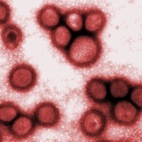Health and Behavior in the Shar-Pei
Often the first sign of disease in the Shar-Pei is a change in behavior or personality. This leads us to several conclusions. First, it is very important to know what the normal behavior of a particular dog is. While Shar-Pei possess several behaviors in common, there certainly exists wide variation among individuals. The veterinarian is usually not aware of the “normal” behavior of a specific dog and must rely on the owner to furnish that information. Second, the owner must understand that the veterinarian may want to pursue diagnostic testing in order to determine if the behavior changes are caused...





